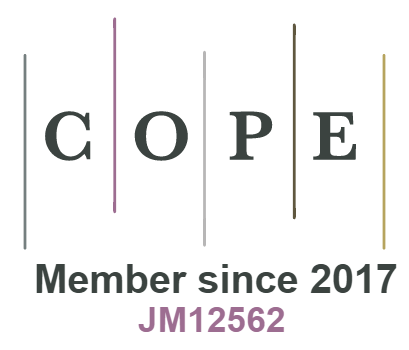Advanced Java Wizardry: Delving into Cutting-Edge Concepts for Scalable and Secure Coding
DOI:
https://doi.org/10.18034/ei.v7i2.684Keywords:
Java Programming, Advanced Concepts, Multithreading, Object-Oriented Programming, Software Design, Robust Code, Coding EfficiencyAbstract
The dynamic landscape of advanced Java is investigated in this essay, focusing on the essential features and techniques that propel engineers into the future of software engineering. Mastering multithreading and concurrency for best performance, as well as maximizing the potential of Java, are all topics that will be covered. An exploration of more complex notions that take Java programming to new heights is presented in this article. Learn the intricacies of web development, microservices, and secure coding techniques. This will ensure that readers understand the tools and methodologies driving the cutting edge of Java programming. Take advantage of insights designed explicitly for developers negotiating the difficulties of advanced Java and embrace innovation and scalability. This study provides developers with the information and skills to construct robust and high-performing applications. It covers subjects such as microservices architecture, reactive programming, and security best practices, among other topics. The purpose of this article is to provide a comprehensive investigation of advanced concepts that are necessary for the development of modern software.
Downloads
References
Aleksić, V., Ivanović, M. (2016). Introductory Programming Subject in European Higher Education. Informatics in Education, 15(2), 163-182. https://doi.org/10.15388/infedu.2016.09 DOI: https://doi.org/10.15388/infedu.2016.09
Alhindawi, N., Al-Batah, M. S., Malkawi, R., Al-Zuraiqi, A. (2017). Hybrid Technique for Java Code Complexity Analysis. International Journal of Advanced Computer Science and Applications, 8(8). https://doi.org/10.14569/IJACSA.2017.080849 DOI: https://doi.org/10.14569/IJACSA.2017.080849
Baddam, P. R. (2017). Pushing the Boundaries: Advanced Game Development in Unity. International Journal of Reciprocal Symmetry and Theoretical Physics, 4, 29-37. https://upright.pub/index.php/ijrstp/article/view/109
Baddam, P. R., & Kaluvakuri, S. (2016). The Power and Legacy of C Programming: A Deep Dive into the Language. Technology & Management Review, 1, 1-13. https://upright.pub/index.php/tmr/article/view/107
Baddam, P. R., Vadiyala, V. R., & Thaduri, U. R. (2018). Unraveling Java’s Prowess and Adaptable Architecture in Modern Software Development. Global Disclosure of Economics and Business, 7(2), 97-108. https://doi.org/10.18034/gdeb.v7i2.710 DOI: https://doi.org/10.18034/gdeb.v7i2.710
Ballamudi, V. K. R. (2016). Utilization of Machine Learning in a Responsible Manner in the Healthcare Sector. Malaysian Journal of Medical and Biological Research, 3(2), 117-122. https://mjmbr.my/index.php/mjmbr/article/view/677
Ballamudi, V. K. R., & Desamsetti, H. (2017). Security and Privacy in Cloud Computing: Challenges and Opportunities. American Journal of Trade and Policy, 4(3), 129–136. https://doi.org/10.18034/ajtp.v4i3.667 DOI: https://doi.org/10.18034/ajtp.v4i3.667
Chawdhary, A., Singh, R., King, A. (2017). Partial Evaluation of String Obfuscations for Java Malware Detection. Formal Aspects of Computing, 29(1), 33-55. https://doi.org/10.1007/s00165-016-0357-3 DOI: https://doi.org/10.1007/s00165-016-0357-3
Chen, G. L., Yao, H., Weng, W. Y. (2013). Java Application Development Based on Requirement-Driven. Applied Mechanics and Materials, 427-429, 2354. https://doi.org/10.4028/www.scientific.net/AMM.427-429.2354 DOI: https://doi.org/10.4028/www.scientific.net/AMM.427-429.2354
Dekkati, S., & Thaduri, U. R. (2017). Innovative Method for the Prediction of Software Defects Based on Class Imbalance Datasets. Technology & Management Review, 2, 1–5. https://upright.pub/index.php/tmr/article/view/78
Dekkati, S., Thaduri, U. R., & Lal, K. (2016). Business Value of Digitization: Curse or Blessing?. Global Disclosure of Economics and Business, 5(2), 133-138. https://doi.org/10.18034/gdeb.v5i2.702 DOI: https://doi.org/10.18034/gdeb.v5i2.702
Deming, C., Baddam, P. R., & Vadiyala, V. R. (2018). Unlocking PHP’s Potential: An All-Inclusive Approach to Server-Side Scripting. Engineering International, 6(2), 169–186. https://doi.org/10.18034/ei.v6i2.683 DOI: https://doi.org/10.18034/ei.v6i2.683
Huang, Y., Chen, R., Wei, J., Pei, X., Cao, J. (2014). Hybrid PolyLingual Object Model: An Efficient and Seamless Integration of Java and Native Components on the Dalvik Virtual Machine. The Scientific World Journal, 2014. https://doi.org/10.1155/2014/785434 DOI: https://doi.org/10.1155/2014/785434
Javed, A., Qamar, B., Jameel, M., Shafi, A., Carpenter, B. (2016). Towards Scalable Java HPC with Hybrid and Native Communication Devices in MPJ Express. International Journal of Parallel Programming, 44(6), 1142-1172. https://doi.org/10.1007/s10766-015-0375-4 DOI: https://doi.org/10.1007/s10766-015-0375-4
Kaluvakuri, S., & Amin, R. (2018). From Paper Trails to Digital Success: The Evolution of E-Accounting. Asian Accounting and Auditing Advancement, 9(1), 73–88. https://4ajournal.com/article/view/82
Kaluvakuri, S., & Lal, K. (2017). Networking Alchemy: Demystifying the Magic behind Seamless Digital Connectivity. International Journal of Reciprocal Symmetry and Theoretical Physics, 4, 20-28. https://upright.pub/index.php/ijrstp/article/view/105
Kaluvakuri, S., & Vadiyala, V. R. (2016). Harnessing the Potential of CSS: An Exhaustive Reference for Web Styling. Engineering International, 4(2), 95–110. https://doi.org/10.18034/ei.v4i2.682 DOI: https://doi.org/10.18034/ei.v4i2.682
Lal, K. (2015). How Does Cloud Infrastructure Work?. Asia Pacific Journal of Energy and Environment, 2(2), 61-64. https://doi.org/10.18034/apjee.v2i2.697 DOI: https://doi.org/10.18034/apjee.v2i2.697
Lal, K., & Ballamudi, V. K. R. (2017). Unlock Data’s Full Potential with Segment: A Cloud Data Integration Approach. Technology & Management Review, 2(1), 6–12. https://upright.pub/index.php/tmr/article/view/80
Lal, K., Ballamudi, V. K. R., & Thaduri, U. R. (2018). Exploiting the Potential of Artificial Intelligence in Decision Support Systems. ABC Journal of Advanced Research, 7(2), 131-138. https://doi.org/10.18034/abcjar.v7i2.695 DOI: https://doi.org/10.18034/abcjar.v7i2.695
Liu, X., Hou, K. M., de Vaulx, C., El Gholami, K. (2014). Real-time Embedded Java Virtual Machine for Application Development in Wireless Sensor Network. Journal of Networks, 9(7), 1828-1837. DOI: https://doi.org/10.4304/jnw.9.7.1828-1837
Maddali, K., Rekabdar, B., Kaluvakuri, S., Gupta, B. (2019). Efficient Capacity-Constrained Multicast in RC-Based P2P Networks. In Proceedings of 32nd International Conference on Computer Applications in Industry and Engineering. EPiC Series in Computing, 63, 121–129. https://doi.org/10.29007/dhwl DOI: https://doi.org/10.29007/dhwl
Maddali, K., Roy, I., Sinha, K., Gupta, B., Hexmoor, H., & Kaluvakuri, S. (2018). Efficient Any Source Capacity-Constrained Overlay Multicast in LDE-Based P2P Networks. 2018 IEEE International Conference on Advanced Networks and Telecommunications Systems (ANTS), Indore, India, 1-5. https://doi.org/10.1109/ANTS.2018.8710160 DOI: https://doi.org/10.1109/ANTS.2018.8710160
Motika, C., von Hanxleden, R. (2015). Light-weight Synchronous Java (SJL): An Approach for Programming Deterministic Reactive Systems with Java. Computing. Archives for Informatics and Numerical Computation, 97(3), 281-307. https://doi.org/10.1007/s00607-014-0416-7 DOI: https://doi.org/10.1007/s00607-014-0416-7
Roy, I., Maddali, K., Kaluvakuri, S., Rekabdar, B., Liu’, Z., Gupta, B., Debnath, N. C. (2019). Efficient Any Source Overlay Multicast In CRT-Based P2P Networks - A Capacity-Constrained Approach, 2019 IEEE 17th International Conference on Industrial Informatics (INDIN), Helsinki, Finland, 1351-1357. https://doi.org/10.1109/INDIN41052.2019.8972151 DOI: https://doi.org/10.1109/INDIN41052.2019.8972151
Thaduri, U. R. (2017). Business Security Threat Overview Using IT and Business Intelligence. Global Disclosure of Economics and Business, 6(2), 123-132. https://doi.org/10.18034/gdeb.v6i2.703 DOI: https://doi.org/10.18034/gdeb.v6i2.703
Thaduri, U. R. (2018). Business Insights of Artificial Intelligence and the Future of Humans. American Journal of Trade and Policy, 5(3), 143–150. https://doi.org/10.18034/ajtp.v5i3.669 DOI: https://doi.org/10.18034/ajtp.v5i3.669
Thaduri, U. R., Ballamudi, V. K. R., Dekkati, S., & Mandapuram, M. (2016). Making the Cloud Adoption Decisions: Gaining Advantages from Taking an Integrated Approach. International Journal of Reciprocal Symmetry and Theoretical Physics, 3, 11–16. https://upright.pub/index.php/ijrstp/article/view/77
Toledo, R., Nunez, A., Tanter, E., Noye, J. (2012). Aspectizing Java Access Control. IEEE Transactions on Software Engineering, 38(1), 101-117. https://doi.org/10.1109/TSE.2011.6 DOI: https://doi.org/10.1109/TSE.2011.6
Vadiyala, V. R. (2017). Essential Pillars of Software Engineering: A Comprehensive Exploration of Fundamental Concepts. ABC Research Alert, 5(3), 56–66. https://doi.org/10.18034/ra.v5i3.655 DOI: https://doi.org/10.18034/ra.v5i3.655
Vadiyala, V. R., & Baddam, P. R. (2017). Mastering JavaScript’s Full Potential to Become a Web Development Giant. Technology & Management Review, 2, 13-24. https://upright.pub/index.php/tmr/article/view/108
Vadiyala, V. R., & Baddam, P. R. (2018). Exploring the Symbiosis: Dynamic Programming and its Relationship with Data Structures. Asian Journal of Applied Science and Engineering, 7(1), 101–112. https://doi.org/10.18034/ajase.v7i1.81 DOI: https://doi.org/10.18034/ajase.v7i1.81
Vadiyala, V. R., Baddam, P. R., & Kaluvakuri, S. (2016). Demystifying Google Cloud: A Comprehensive Review of Cloud Computing Services. Asian Journal of Applied Science and Engineering, 5(1), 207–218. https://doi.org/10.18034/ajase.v5i1.80 DOI: https://doi.org/10.18034/ajase.v5i1.80
Waldmann, J., Gerken, J., Hankeln, W., Schweer, T., Glöckner, F. O. (2014). FastaValidator: An Open-Source Java Library to Parse and Validate FASTA Formatted Sequences. BMC Research Notes, 7, 365. https://doi.org/10.1186/1756-0500-7-365 DOI: https://doi.org/10.1186/1756-0500-7-365
Downloads
Published
Issue
Section
License
Copyright (c) 2019 Takudzwa Fadziso, Vishal Reddy Vadiyala, Parikshith Reddy Baddam

This work is licensed under a Creative Commons Attribution-NonCommercial 4.0 International License.
Engineering International is an Open Access journal. Authors who publish with this journal agree to the following terms:
- Authors retain copyright and grant the journal the right of first publication with the work simultaneously licensed under a CC BY-NC 4.0 International License that allows others to share the work with an acknowledgment of the work's authorship and initial publication in this journal.
- Authors are able to enter into separate, additional contractual arrangements for the non-exclusive distribution of the journal's published version of their work (e.g., post it to an institutional repository or publish it in a book), with an acknowledgment of its initial publication in this journal. We require authors to inform us of any instances of re-publication.









